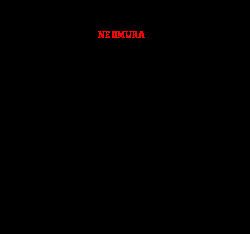Superdomain Neomura | Scientific name Neomura | |
 | ||
Similar Filozoa, Opisthokont, Orthogastropoda, Lophotrochozoa, Archaeplastida | ||
Lyrics video nakaruga neomura 2015
Neomura is a clade composed of the two domains of life of Archaea and Eukaryota. The group was named by Thomas Cavalier-Smith in 2002. Its name means "new walls", reflecting his hypothesis that it evolved from Bacteria, and one of the major changes was the replacement of peptidoglycan cell walls with other glycoproteins.
Contents
- Lyrics video nakaruga neomura 2015
- Morphology
- Interpretations
- Three domains view
- Derived clade view
- References
Morphology
The Neomura are a very diverse group, containing all of the multicellular species, as well as all of the most extremophilic species, but they all share certain molecular characteristics. All Neomurans have histones to help with chromosome packaging, and most have introns. All use the molecule methionine as the initiator amino acid for protein synthesis (Bacteria use formylmethionine). Finally, all Neomurans use several kinds of RNA polymerase, whereas Bacteria use only one.
Interpretations
There are several hypotheses for the phylogenetic position of the Neomura, which can be grouped into two categories.
Three domains view
When Carl Woese first published his three-domain system, it was believed that the domains Bacteria, Archaea, and Eukarya were equally old and equally related on the tree of life. However certain evidence began to suggest that Eukarya and Archaea were more closely related to each other than either was to Bacteria. This evidence included the common use of cholesterols and proteasomes, which are complex molecules not found in most bacteria, leading to the inference that the root of life lay between Bacteria on the one hand, and Archaea and Eukarya combined on the other, i.e. that there were two primary branches of life subsequent to the LUCA - Bacteria and Neomura.
Derived clade view
In a 2002 paper, and subsequent papers, Thomas Cavalier-Smith and coworkers have promulgated a hypothesis that Neomura was a clade deeply nested with Eubacteria with Actinobacteria as its sister group. He wrote, "Eukaryotes and archaebacteria form the clade neomura and are sisters, as shown decisively by genes fragmented only in archaebacteria and by many sequence trees. This sisterhood refutes all theories that eukaryotes originated by merging an archaebacterium and an α-proteobacterium, which also fail to account for numerous features shared specifically by eukaryotes and actinobacteria."
These include the presence of cholesterols and proteasomes in Actinobacteria as well as in Neomura. Features of this complexity are unlikely to evolve more than once in separate branches, so either there was a horizontal transfer of those two pathways, or Neomura evolved from this particular branch of the bacterial tree.
